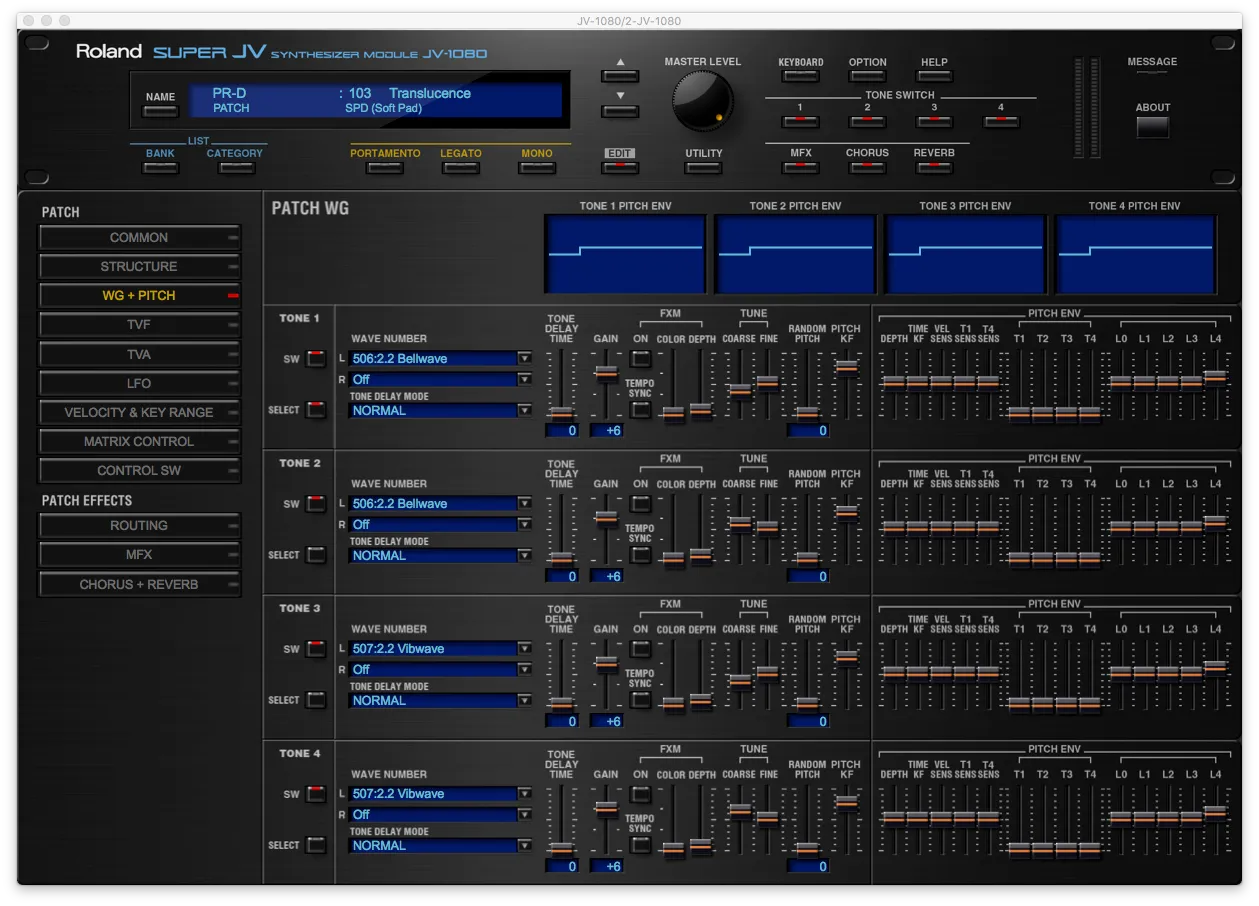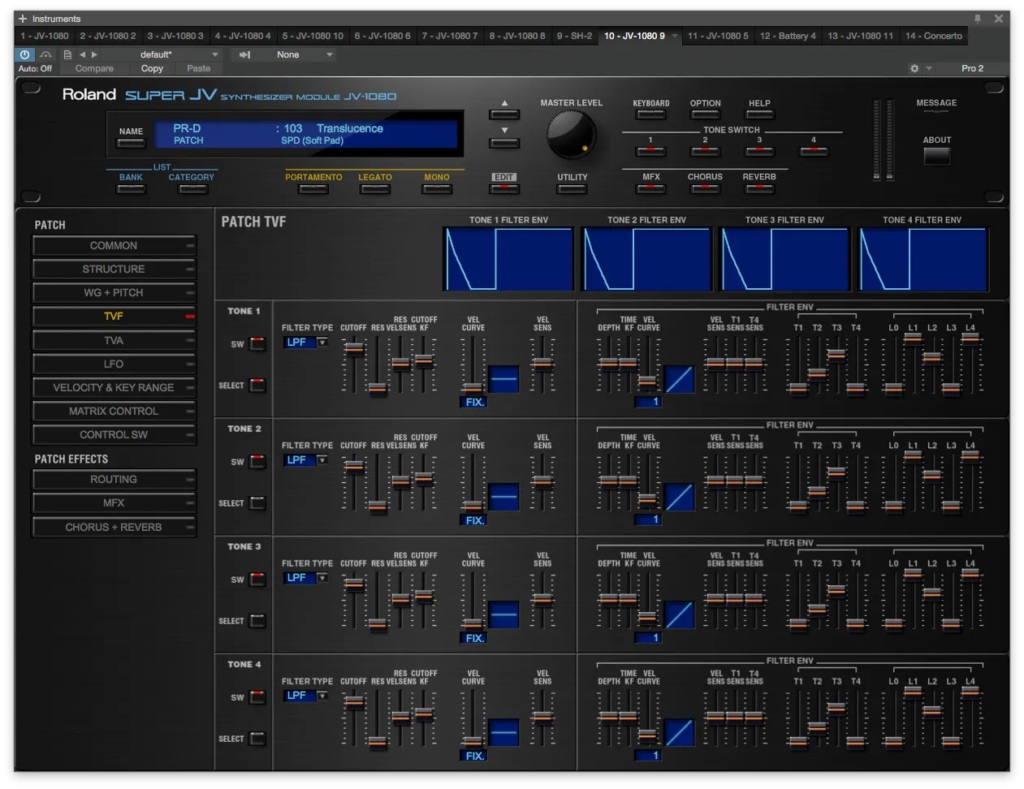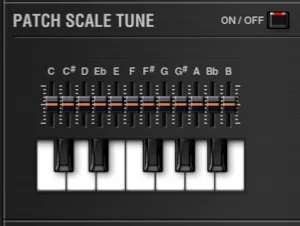
Roland Cloud JV-1080

A few days before Christmas, Roland Cloud released their long-awaited Cloud version of their iconic — an probably the best-selling synthesiser module in the world — the Super JV-1080. The 2U rack-mount was a huge piece when it hit the market and with a 2 row 40 character display, it didn’t really do the synthesiser’s engine justice. Packed inside it was “64Voice/16Part and Variable EFX”, according to the start-up screen. It came with four banks of 128 patches each, where the last bank named “PR-D” was dedicated to General MIDI. It also had a “USER” bank for 128 of your own patches and four expansion slots for SR-JV80 cards where there were 20 released in total.

But, is the Roland Cloud JV-1080 really a JV-1080? Let’s find out!
I’ve used the JV-1080 so much back in the days that my body still has a muscle memory regarding the buttons and the Value wheel. I still know how it feels, and sounds, using the front panel. After four or five years of using the JV-1080, I upgraded it in a trade-deal to a JV-2080 so I could fit more expansion cards.
The hardware module had a Performance mode that could stack up to sixteen different patches as the same time. The Cloud version doesn’t have this mode and thus missing the button and front panel text that had anything to do with it. The Cloud version is a single part version — so you’d need to load sixteen instances and, well, manually build your Performace settings. And hope your CPU doesn’t melt.
Another striking difference is that the Cloud version has 128 notes polyphony which is double up from the hardware. The JV-2080 also had 64 voices, so you had to go all the way up to the XV-series to find 128 voices. Those were distributed and shared between the 16 parts if used in the Performance mode as well. So having 128 voices per part is just nuts. But, hey! Roland did it because they can. Yes, I know you can have 128 voices in the hardware version of the JV-1080 (and JV-2080) by buying more of them and using the Stacking mode. Correct me if I’m wrong, but you could stack up to eight of the JV-1080s in a MIDI chain so the voices where distributed across the modules. This must have cost a fortune back then since you also had to get eight of the expansion cards as well. Ouch. But, hey! Roland did it because they could.
The Basics
So, it’s a single part version of the real thing. A part is basically a Patch. And a Patch is made up from up to four Tones. The Tones are grouped two and two, so Tone 1 and 2 can interact with each other (read Ring Modulation among other things) and Tone 3 with 4. A Tone is a layer with two waveforms (hard-panned left and right), two semi-assignable LFOs, one 16-step generator and dedicated envelopes for the filter and amplitude. The envelopes are quite complex with more the the normal 4-stages of Attack, Sustain, Decay and Release. Roland calls it T1 through T4 but they also add L1 through L3 giving the ADS stages of the envelope their own Level. This means that you can for example set the level of the Decay lower than the level of the Sustain and in a jiffy you’ve created a more complex curve than any ordinary ADRS envelope could ever produce. One of my favourite tricks when creating pads (have I told you how much I love pad sounds?) is to do just that; set the level of the Decay lower than the Sustain, but just a tiny bit. The sound grows louder with the attack, fades away with the Decay just to come back a little with the Sustain. It’s perfect for breathing mystery and liveliness into a pad. Add some reverb and you’re done.

Multi-Effector EFX
All this can be sent through the internal effects processor named “MFX” in the Cloud version. The JV-1080 and JV-2080 had 40 Multi-Effector EFX while the Cloud version has a whooping 78. The XV-3080 had 63 and the XV-5080 had 90, so the Cloud version lands somewhere between these models. What made me look at the XV-3080 and XV-5080 is in fact that the Cloud version of the JV-1080 has the same waveforms as the latter two. The JV-1080 and JV-2008 had 255 in the bank “INT-A” and another 193 in “INT-B”. Both the Cloud JV-1080, the XV-3080 and the XV-5080 has 1083 waveforms, and they actually match. And the four banks of presets shipped with the Cloud JV-1080 also matches the “PR-A”, “PR-B”, “PR-C” and “PR-E” banks on the XV models. Yes, I’ve double-checked by reading the XV-5080 Owner’s Manual without owning an XV-5080. Let’s say I had some time to spare.

In the Common section for a Patch you’ll have micro-tuning named “Patch Scale Tune” — something added in the Cloud version that wasn’t in either of the above mentioned rack-mounted flagship synthesisers. Another of my favourite settings found in the Common section is the “Analog Feel” setting. It emulates oscillator drift and goes way beyond stable operations at its maximal setting.
The JV-1080 also comes with a Chorus and Reverb, along side the EFX. And digging deeper into the Cloud version, there are “SRV Room”, “SRV Hall” and “SRV Plate” from the XV-5080, instead of “Room1”, “Room2”, “Stage1”, “Stage2”, “Hall1”, “Hall2”, “Delay” and “Pan-Dly” found in the JV-1080. So, is it really a JV-1080? I’ve just compared the “Hall1” to the “SRV Hall” and latter sounds amazingly good! I sincerely hope Roland Cloud also models their SRV-330, SDE-330 and of course the SDX-330; three of the Roland hardware effect processors which has been high up on my list for a very long time. Sure, I’ve got my basket of reverbs covered — but it would some how seal the deal if the didn’t just model their instruments but also other things around them.
Wrapping Up
So, is the Cloud JV-1080 a clone, or copy, of the legendary JV-1080? No, even though this one is lacking the Performance section — this is definitely something more, something new.
There are some drawbacks I hope Roland Cloud irons out in the coming updates. For example, I’d very much like the software to be able to read SYSEX from the original hardware. The Cloud D50 didn’t do this in the beginning, but it was a feature which was later added. However, the D50 are much closer to the original hardware than the JV-1080 is — since it’s a morph between the JV-1080 and the XV-5080.
This is an amazing piece of software!
Edit: Further Reading (2018, January, 7th)
Mistakes and inaccuracies in this article has been revised in this post instead of re-writing this one.
2 Comments